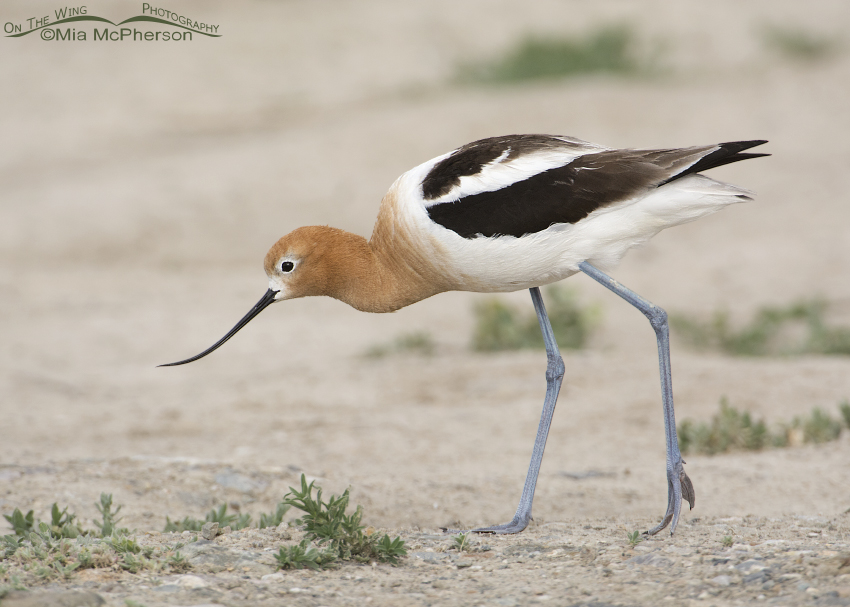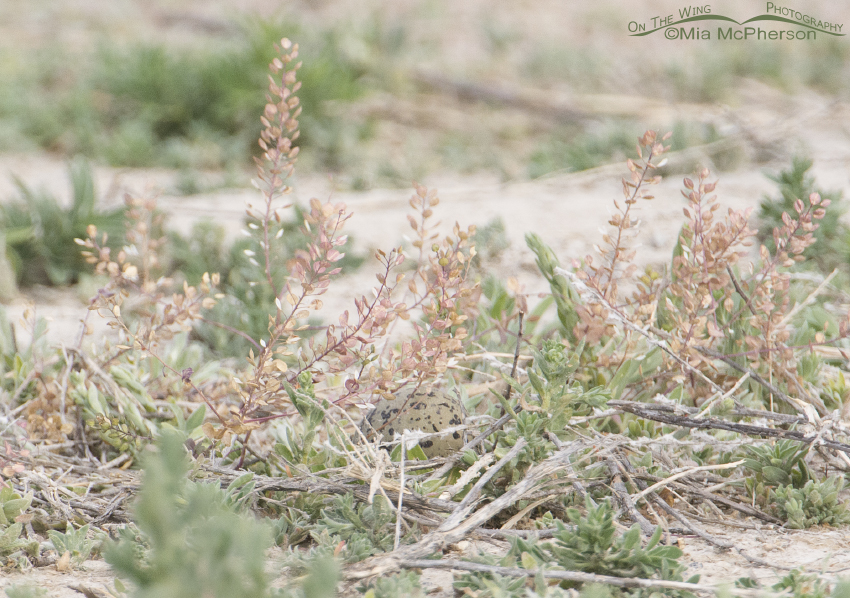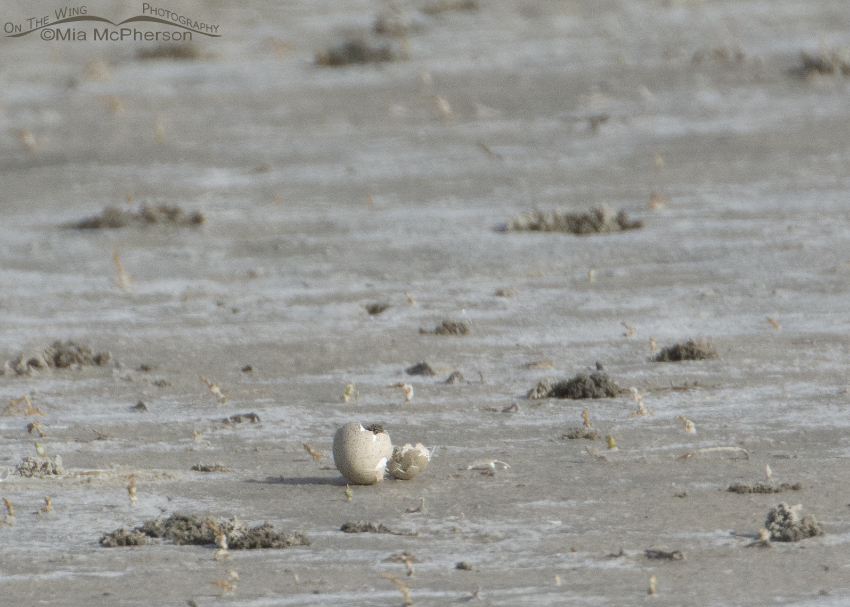 American Avocet adult in low light – Nikon D7100, f8, 1/1000, ISO 640, +0.7 EV, Nikkor 200-400mm VR with 1.4x TC at 400mm, natural light
American Avocet adult in low light – Nikon D7100, f8, 1/1000, ISO 640, +0.7 EV, Nikkor 200-400mm VR with 1.4x TC at 400mm, natural light
So far I have taken my new Nikon D7100 out into the field four times and haven’t really begun to put it to the test. I have had bad or low light and birds up close or good light and birds that are at a distance. I am looking forward to a day with great light and close subjects soon!
Last week I did spend a morning at Bear River Migratory Bird Refuge in northern Utah and even though the light wasn’t the best I still had a great time. There were plenty of American Avocets visible from the roads at the refuge. It is nesting season and even though there are already some chicks running around some of the avocets are still incubating eggs too.
 American Avocet egg in a scrape – Nikon D7100, f8, 1/640, ISO 640, +0.7 EV, Nikkor 200-400mm VR with 1.4x TC at 400mm, natural light
American Avocet egg in a scrape – Nikon D7100, f8, 1/640, ISO 640, +0.7 EV, Nikkor 200-400mm VR with 1.4x TC at 400mm, natural light
Can you see the egg in this image? Some are very well hidden and before the adult left this egg it tugged and pulled some of the vegetation closer to the egg. It would be easy to accidentally step or drive over this egg in the location of this scrape so it is important at this time of the year to watch where we put our feet and watch where we drive.
This is a large crop from the original frame, I did not approach this scrape closely at all.
 Hatching American Avocet – Nikon D7100, f6.63, 1/4000, ISO 640, -0.3 EV, Nikkor 200-400mm VR with 1.4x TC at 400mm, natural light
Hatching American Avocet – Nikon D7100, f6.63, 1/4000, ISO 640, -0.3 EV, Nikkor 200-400mm VR with 1.4x TC at 400mm, natural light
From the south side of the auto tour route there is a flat area that usually has a thin layer of water over the mud but last week it was very dry, there were two adult avocets there that seemed quite alert so I started to look for small chicks but what I saw instead perplexed me. Out in the middle of the mud flat a tiny bit of movement caught my eye and then I saw part of an egg. This image shows a partially broken egg which is not in a scrape but a very exposed and open area. The chick was moving in the egg and the adults were perhaps 30 feet from it. I wondered if a predator, perhaps a night heron, tried to take the egg away but dropped the egg if the adult avocets chased after the heron. At any rate it puzzled me that this hatching egg would be where it is. I hope the chick made it to safety.
This image represents 0.433% of the original frame, I was a long, long way from the egg
Ethics on photographing nesting birds:
- Do not approach too closely
- If the birds show any sign of distress, back away
- Don’t trim leaves, twigs or branches to get a clearer shot, you may inadvertently attract predators or cause the eggs/chicks to over heat
- Follow local, state and federal guidelines concerning nesting birds
- Don’t harass the birds to get an action shot
- Don’t stay a long time with nesting birds or chicks, that disrupts their normal behavior
- Always remember that your scent may draw predators to the area of nesting birds or birds with chicks.
For more information on the ethics of photographing nesting birds or chicks: the Principles of Birding Ethics published by the American Birding Association.
Bear River Migratory Bird Refuge is one of my favorite places to visit during the summer to observe and photograph nesting birds and take in the beauty of the refuge.
Mia
Click here to see more of my American Avocet photos plus facts and information about this species.


What beautiful eggs! Art objects in themselves. Thanks, too, for always noting the important ethical considerations in photography. So important!
Love your first shot–Colors, detail are great!!! Love your wise, caring comments just as much. You, Wild Woman, are a much appreciated, much needed spokesperson for the wild world….keep up the good work (and photography!)
Enjoyed the photos and the wisdom in this post. Enjoy watching American Avocets, so special to see them nesting and hatching. It is a precarious life, hope the little one makes it.
Stunning sequence – and advice.
Thank you.
Great image of the adult and thanks for all the good info Mia. I want to ride the loop soon on my Vespa before it gets too hot. BTW, yesterday I drove past a Killdeer attracted to some road kill by the back of the high school when a Magpie flew in to investigate. Surprising how close I came to the Killdeer (just a few feet) but it didn’t fly away.
Nice shot of that Avocet! We’ll be down in that neck of the woods first week in August. Maybe we’ll get to find time to drive through there. I always like visiting Bear River Refuge. Hope things worked okay for the chicky.
Such a graceful looking creature … I hope the baby made it out and that Mom and Dad were able to herd it back to safety!!